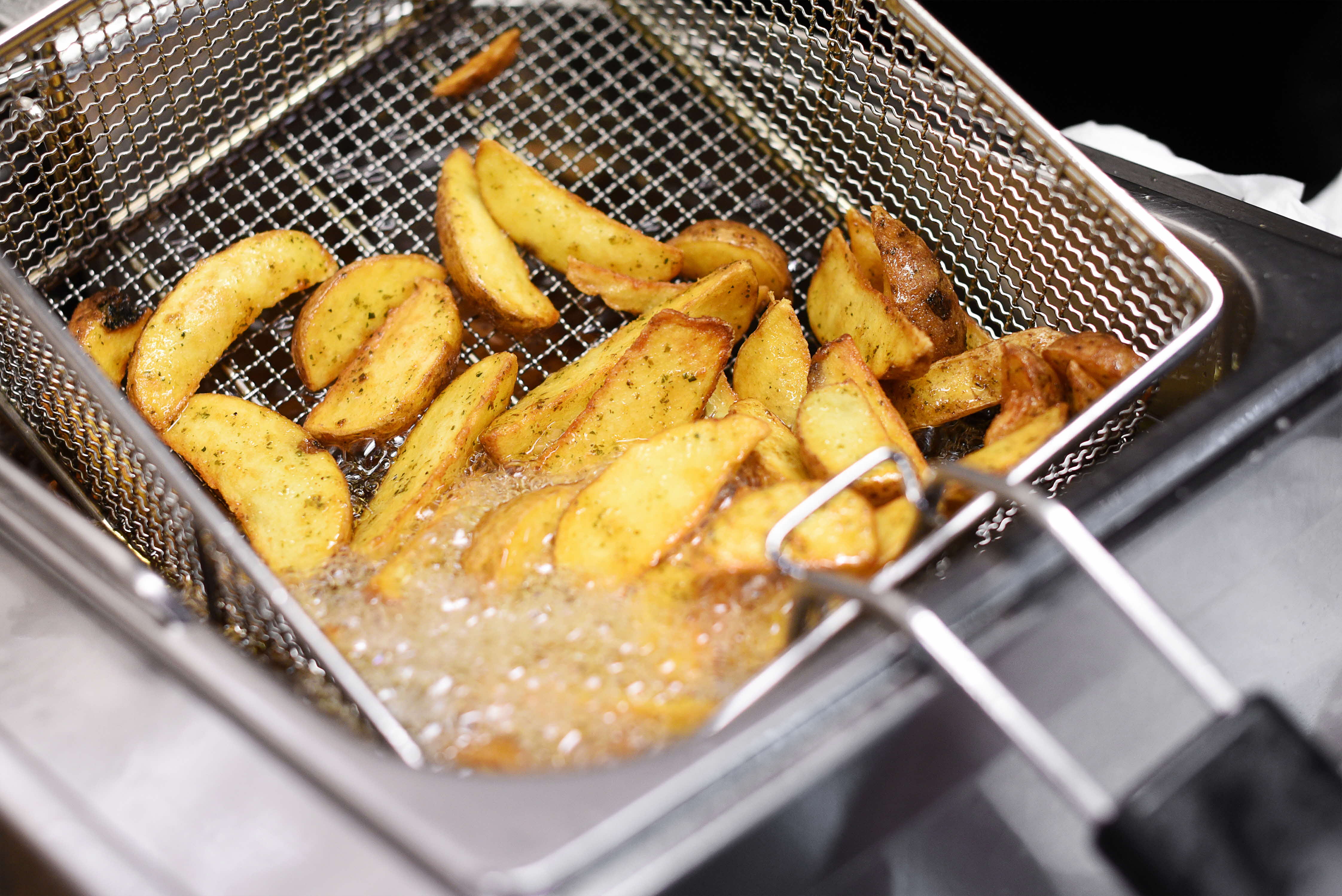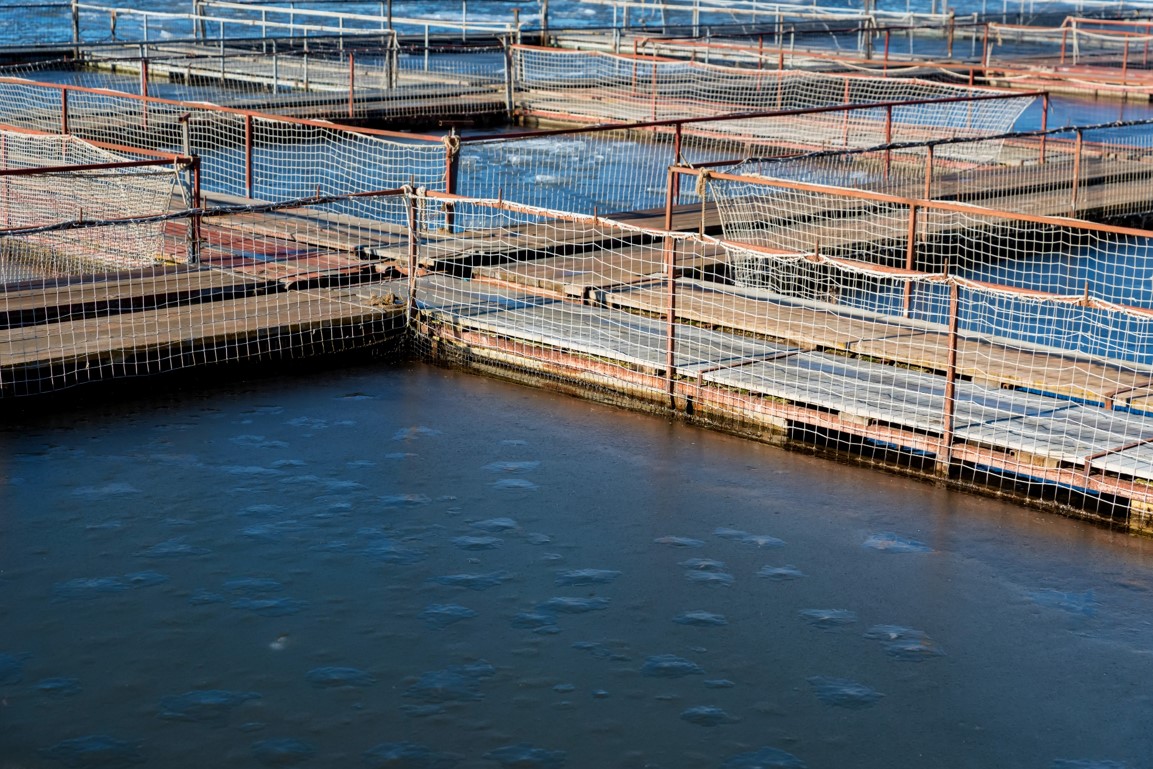
Unlocking the Potential of Our Fish Farms
As Singapore works towards our 30 by 30 goal of building the agri-food industry’s capability and capacity to sustainably produce 30% of our nutritional needs locally by 2030, aquaculture has a big part to play. After all, fish is a commonly consumed source of protein that can be farmed locally in a productive and sustainable manner, thereby reducing our reliance on imports, and strengthening Singapore’s food security.
Expanding Singapore’s fish production is not as simple as merely packing more fish into the same space though. Such a solution would be highly unsustainable. As more fish are kept at higher density, the water quality might decrease with unconsumed fish feed and waste. Not only does this affect the health of the fish, it can also negatively impact the surrounding environment, resulting in the deterioration of natural habitats such as coral reefs and the seabed, for example.
Maintaining ideal water conditions is therefore critical when it comes to sustainably producing more fish to achieve our food security goals.
How Poor Water Conditions Affect Our Fish
To fully appreciate the risks of undesirable water conditions on aquaculture, we first need to understand its impact on fish health. Water quality is made up of several factors, including parameters such as temperature, dissolved oxygen and acidity/alkalinity levels, and the salinity of the water. These factors need to be carefully balanced to create an ideal environment for each species.
Temperature and Dissolved Oxygen (DO)
Water temperature influences the growth and many other physiological processes in fish, such as feeding behaviour, oxygen consumption, and immune system performance. As fish cannot regulate their own body temperature, they are heavily reliant on the temperature of the water that they are in. The resultant effects of higher water temperatures include increased metabolism, which can increase the intake of water pollutants, and increased toxicity of ammonia and nitrite, which can lead to cardiac arrest, and stunted growth.
Higher water temperatures also spur on external threats such as parasites and disease-causing organisms. When combined with other environmental conditions such as increased nutrients and stable wind conditions, warmer waters can encourage the growth of harmful algal blooms. These can wipe out thousands of fish in a short time span. Singapore’s worst case on record took place in the East Johor Strait in 2015, when around 500 tonnes of fish died over a course of two weeks.
Far from being independent of each other, the factors that make up water quality are often intertwined. Higher temperatures directly decrease the availability of oxygen in our water, leading to low dissolved oxygen levels. At the same time, fish require more oxygen to maintain body functions in warmer waters, particularly immediately after feeding. When combined, these conditions affect the growth of fish and increase mortality risks.
Low dissolved oxygen levels do not always result from higher water temperatures, though. Man-made factors can also contribute to it. For example, unconsumed fish feed arising from the overfeeding can lead to lower availability of oxygen in the water.
Other parameters (acidity/alkalinity and salinity of water)
The acidity and alkalinity of water affects fishes’ ability to maintain their normal physiology. With the desirable range for fish production lying between pH 7.5 and pH 8.5 (depending on fish species), fish in water conditions beyond this range become stressed, more susceptible to disease, and face higher risk of death.
The salinity of water is defined as the total concentration of ions, such as sodium and chloride. In general, salinity is higher in sea water and the optimal salinity differs between fish species. However, as with pH conditions, salinities outside of a fish’s tolerance will impact its reproduction and survivability[1]. Seabass, for instance, can live in either fresh or seawater; snappers, on the other hand, are an exclusively marine species that live in water with higher salinity.
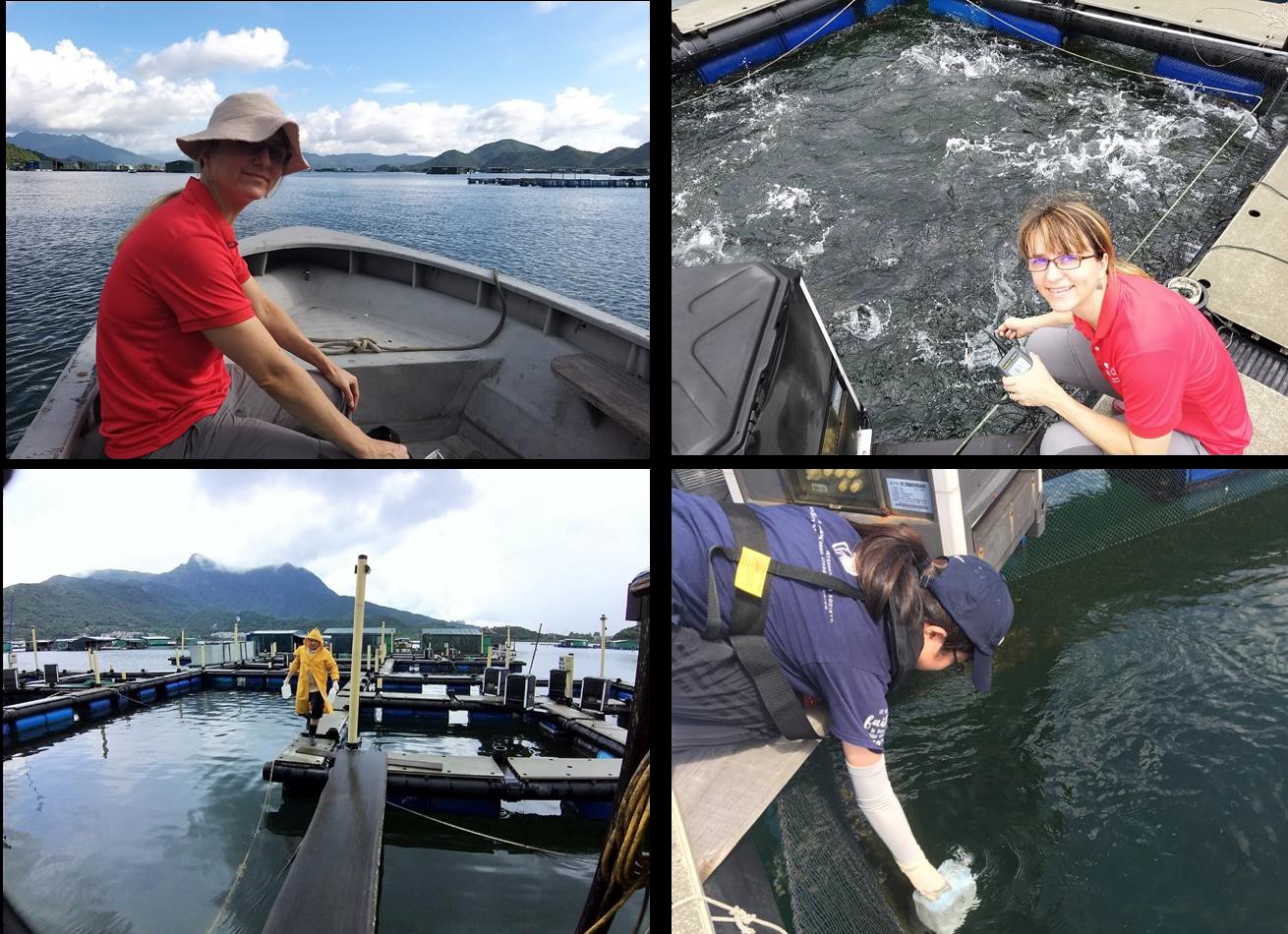
One of the writers, Dr Giana Gomes, and her previous team from City University of Hong Kong conducting aquacultural studies at a fish farm in Hong Kong. Source: Dr Giana Gomes
If it can be measured, it can be managed
While a closed containment system would address most of these issues, it is not something most farms can achieve in the immediate term. Still, there are other steps we can take to ensure ideal water quality and healthy aquaculture production.
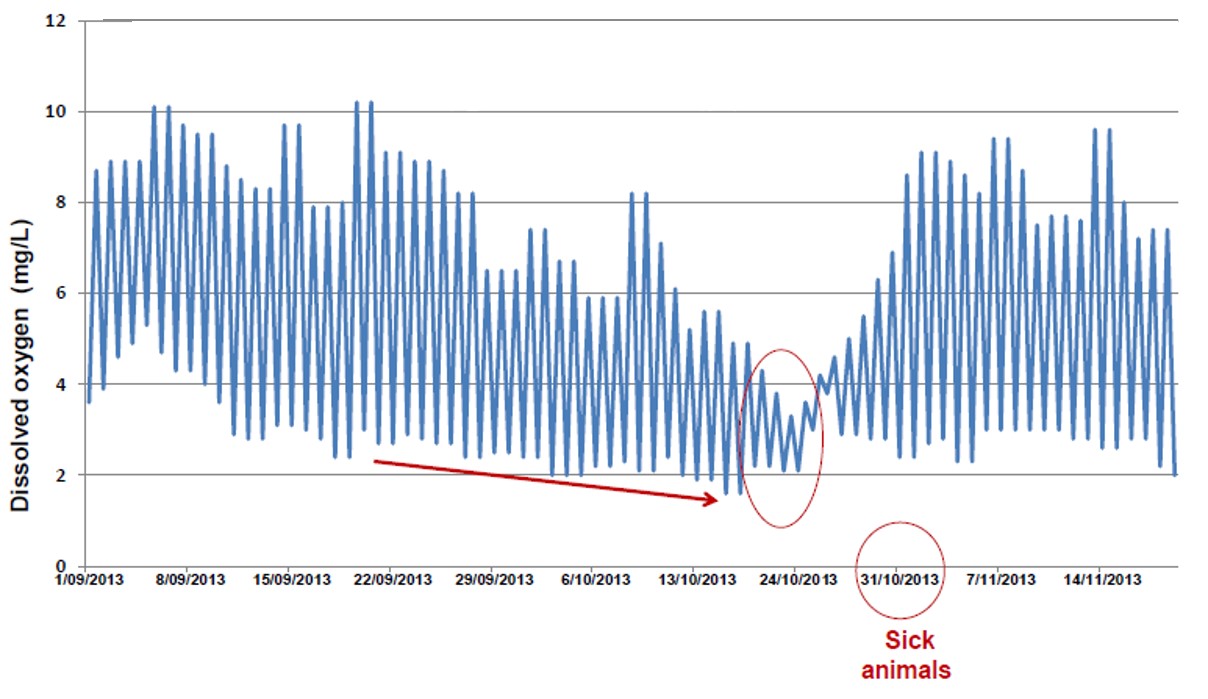
Often, correlation can be found between water quality data and issues such as parasite outbreaks. Source: Dr Giana Gomes
Water Quality Data
The first step towards ensuring ideal water conditions is the collection and monitoring of water quality data, including temperature, oxygen, salinity, ammonia and acidity levels. Doing so can enable farmers to make more informed decisions. After all, if it can be measured, it can be managed.
For instance, if the level of dissolved oxygen drops below 3 mg/L, depending on factors like fish species and life stage, there might be a need to reduce or stop feeding activities. This is because fish in these conditions will be unable to process and properly digest any additional food. Conversely, by continuing to feed animals, the levels of dissolved oxygen will be further depleted by the higher metabolic rates of the fish and unconsumed feed, thereby creating a potentially deadly situation.
Collecting water quality data also provides us with information to analyse and pre-empt issues and the risk of disease outbreaks. Drastic changes in water conditions do not often happen overnight, but take several days to reach dangerous levels. Farmers conducting regular monitoring will therefore be able to pick up changes such as increased ammonia levels or a drop in oxygen level. Suitable preventative actions can then be taken to mitigate potential issues, including activating blowers and deploying air-stones (aquarium bubblers) to oxygenate the water, cleaning fouling from the nets, and reducing stocking density.
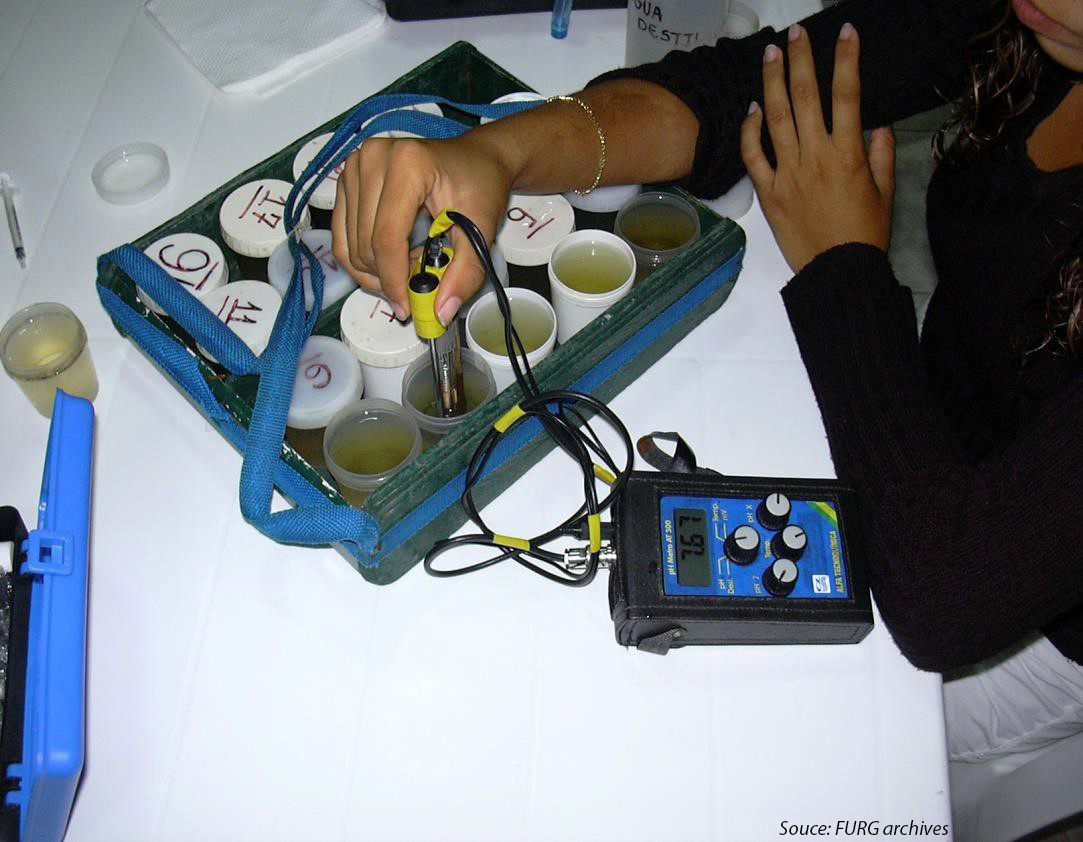
An important first step towards ensuring healthy aquaculture production is to regularly monitor water quality data in our fish farms. Source: FURG archives
Feeds and Feeding Data
Water quality aside, it is also important to monitor data points related to feeds and feeding. These include the type of feed, amount of feed each cage/tank receives per day, the frequency of feeding, the behaviour of fish, and the feed conversion ratio – the total amount of feed used in relation to the fish biomass produced.
While the data helps determine if fish are getting the right nutrients they require, it also plays a key role in the commercial sustainability of the farm. With many farms spending more than 50 per cent of production costs on fish feed, such data can help farmers to determine if the feed used is cost-effective and productive.
Fingerlings
Finally, managing a successful fish farm starts with having a strong foundation – healthy fingerlings. After all, healthy fingerlings have a higher chance of growing into strong fish.
To monitor the quality of fingerlings coming from different batches and suppliers, farmers should collect information on arrival (such as estimated quantity delivered and health conditions), and request for DNA tests to check for the presence of pathogens of concern. Farmers should also preserve these samples for investigation should any problem occur after stocking.
Thereafter, details such as their rate of growth (e.g. through regular weight checks), their physical condition (through assessments of their skin, eyes and gills), any treatments that they are undergoing (e.g., baths to combat external parasites), and the rate of mortality, should be collected and recorded regularly.
Such data can help farmers select the healthiest fingerlings from different batches and suppliers for a strong start, as well as aid in forecasting the density and survival rate of the fish.
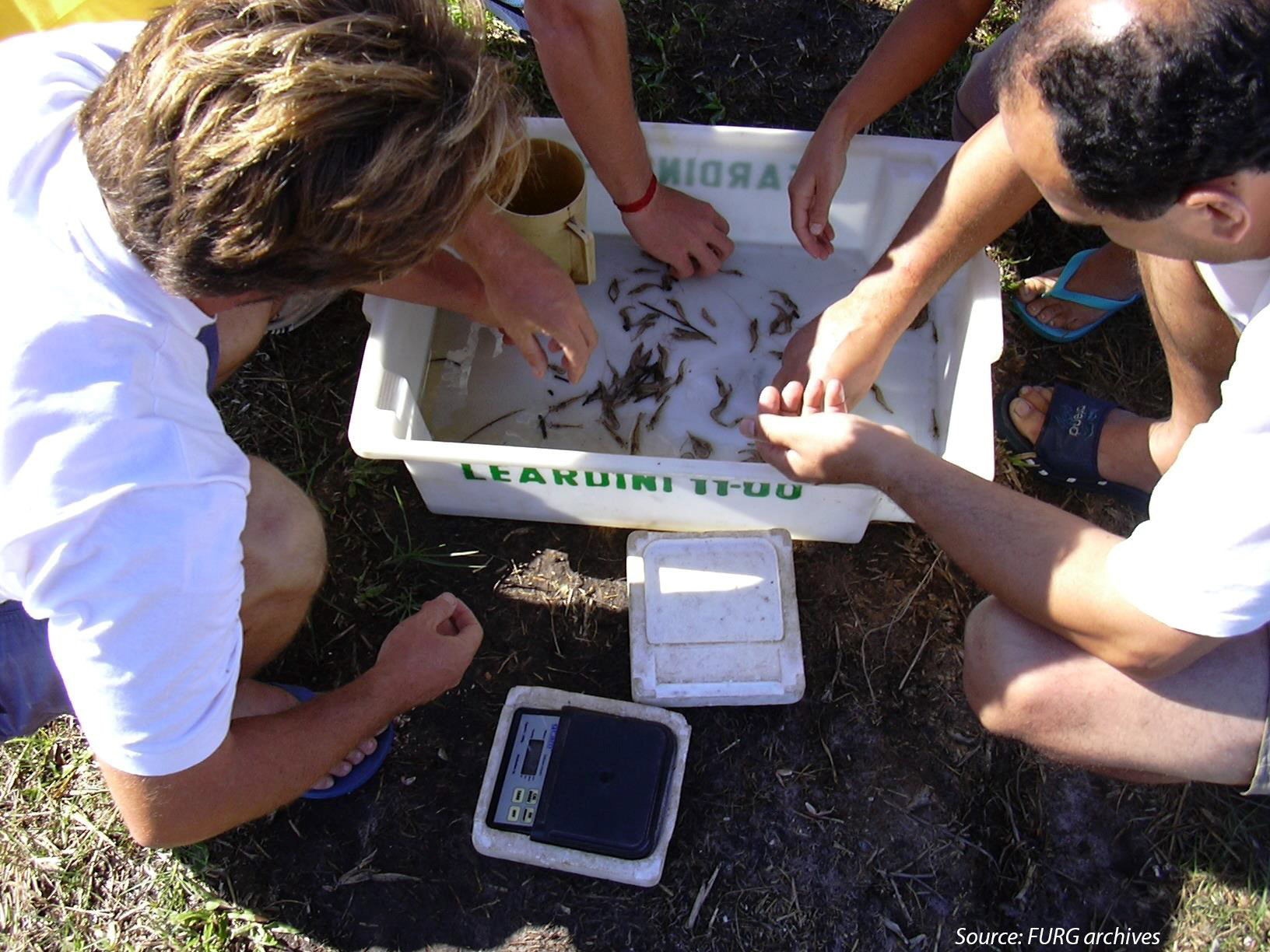
Weekly weight and health checks can help with evaluation of suppliers and feed. Source: FURG archives
Sustainability in Aquaculture
All in all, data from monitoring water quality and aquaculture activities can help farmers farm smarter, prevent and manage the spread of diseases and feed their fish better. It could also improve yield and survival rate.
In tandem, and just as important, such good aquaculture practices can help ensure that our surrounding waters are not degraded over time, thereby safeguarding sustainability of aquaculture. To be sustainable, farmers need to be conscious about the impact that the farm has on the environment, and vice versa.
As Singapore transforms the aquaculture sector, maintaining the quality of our water is crucial in creating a sector that is productive, climate-resilient, and most importantly – sustainable.
About the writers: Dr Giana Gomes is the Head of Marine Biotechnology at Temasek Lifesciences Laboratory, while Dr Jose Domingos is an Associate Professor in Aquaculture at James Cook University. In their spare time, they manage a YouTube Channel – “Hashtag Fish”, where they share their passion about all things related to aquaculture.
[1] https://oxford.universitypressscholarship.com/view/10.1093/acprof:oso/9780198718826.001.0001/acprof-9780198718826-chapter-9


